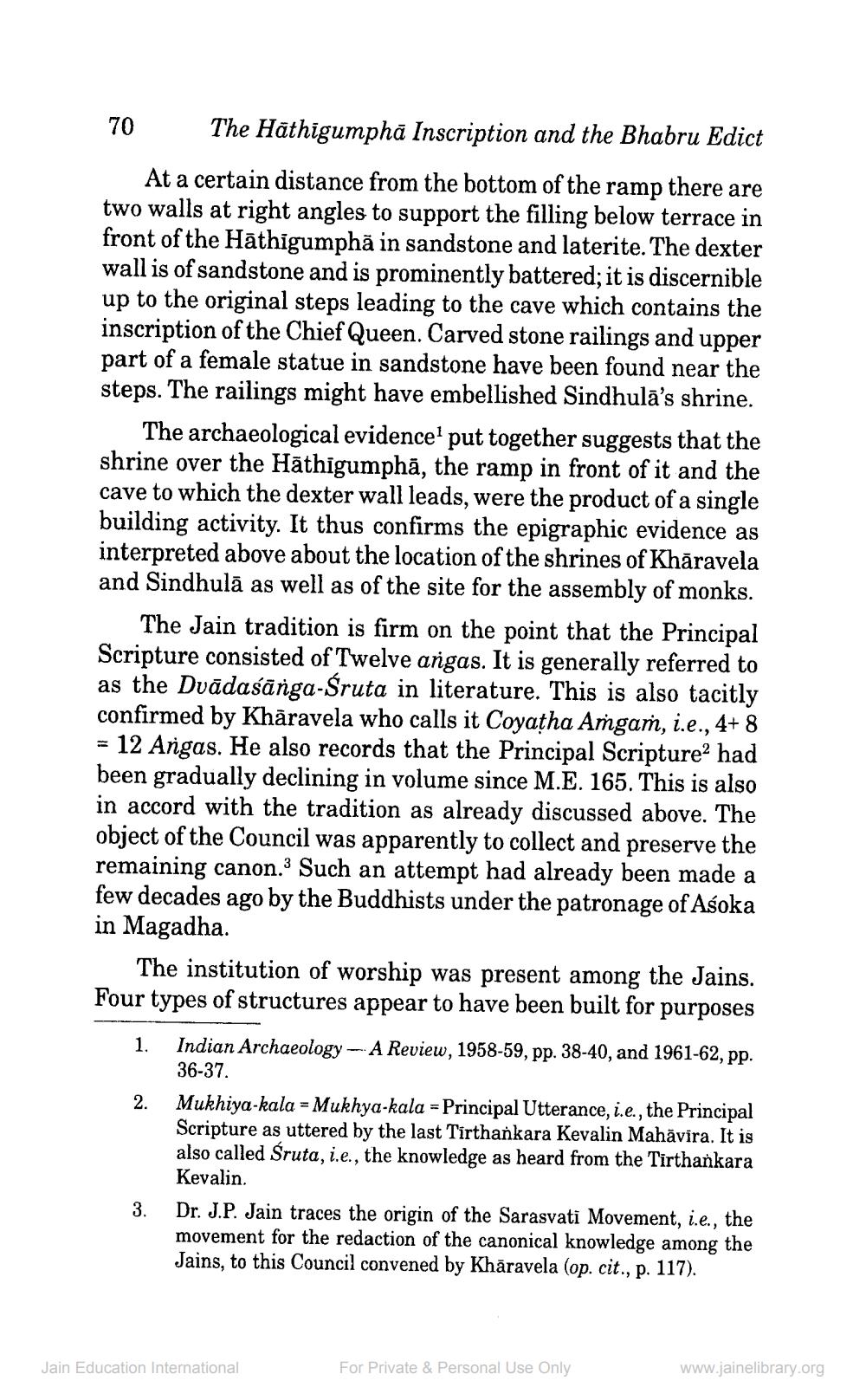________________
70 The Häthigumpha Inscription and the Bhabru Edict
At a certain distance from the bottom of the ramp there are two walls at right angles to support the filling below terrace in front of the Hāthīgumphã in sandstone and laterite. The dexter wall is of sandstone and is prominently battered; it is discernible up to the original steps leading to the cave which contains the inscription of the Chief Queen. Carved stone railings and upper part of a female statue in sandstone have been found near the steps. The railings might have embellished Sindhulā's shrine.
The archaeological evidence put together suggests that the shrine over the Hāthigumphā, the ramp in front of it and the cave to which the dexter wall leads, were the product of a single building activity. It thus confirms the epigraphic evidence as interpreted above about the location of the shrines of Khāravela and Sindhulā as well as of the site for the assembly of monks.
The Jain tradition is firm on the point that the Principal Scripture consisted of Twelve argas. It is generally referred to as the Dvādasānga-Śruta in literature. This is also tacitly confirmed by Khāravela who calls it Coyatha Añgas, i.e., 4+8 = 12 Angas. He also records that the Principal Scripture? had been gradually declining in volume since M.E. 165. This is also in accord with the tradition as already discussed above. The object of the Council was apparently to collect and preserve the remaining canon. Such an attempt had already been made a few decades ago by the Buddhists under the patronage of Asoka in Magadha.
The institution of worship was present among the Jains. Four types of structures appear to have been built for purposes 1. Indian Archaeology - A Review, 1958-59, pp. 38-40, and 1961-62, pp.
36-37. 2. Mukhiya-kala = Mukhya-kala = Principal Utterance, i.e., the Principal
Scripture as uttered by the last Tirthankara Kevalin Mahāvira. It is also called Sruta, i.e., the knowledge as heard from the Tirthankara Kevalin. Dr. J.P. Jain traces the origin of the Sarasvati Movement, i.e., the movement for the redaction of the canonical knowledge among the Jains, to this Council convened by Khāravela (op. cit., p. 117).
www.jainelibrary.org
Jain Education International
For Private & Personal Use Only




